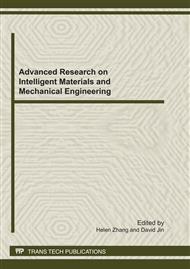p.151
p.157
p.161
p.167
p.171
p.176
p.180
p.184
p.188
Numerical Simulation of Creep-Fatigue Crack Growth for Nickel-Based Super Alloy with Extended Finite Element Method
Abstract:
Extended finite element method is widely used to simulate the discontinuity problems, e.g. fatigue crack growth. This paper mainly analyzes the fatigue crack propagation under elevated temperature in nickel-based super alloy with extended finite element method. Cohesive zone model is used to describe the mechanical behavior around the crack tip. A modified creep damage model is introduced. Fatigue damage and creep damage are accumulated in a linear relationship. And the results produced by computational code are presented and draw a comparison with experimental observation.
Info:
Periodical:
Pages:
171-175
Citation:
Online since:
August 2011
Authors:
Price:
Сopyright:
© 2011 Trans Tech Publications Ltd. All Rights Reserved
Share:
Citation:


